Venue Atmosphere: Enhancing Spaces for Memorable Events
Updated On: October 23, 2025 by Aaron Connolly
Defining Venue Atmosphere
Venue atmosphere brings together all the physical and sensory details that shape how people feel when they walk into an event. Lighting, sound, layout, and décor all mix to set a mood—sometimes it works, sometimes it doesn’t.
What Makes a Memorable Atmosphere
A memorable atmosphere really begins with knowing what you want your event to feel like. It’s all about matching the vibe of the space to your goals.
At a corporate conference, you’ll want professional lighting and clear sightlines. Bright, even lights keep folks alert and focused. The layout should help people network but still let speakers grab attention.
Key elements include:
- Lighting quality – Warm lighting relaxes people, cool lighting wakes them up.
- Sound balance – Background music should set the tone, not drown out conversation.
- Visual cohesion – Colours and décor need to work together, not clash.
- Spatial flow – People should move through the space naturally.
Gaming tournaments? Totally different. You want bold, colourful lighting and upbeat music that match the energy. The venue should feel exciting, but not overwhelming.
Temperature control gets overlooked way too often. If it’s too warm, people get sleepy. If it’s freezing, they’re uncomfortable and distracted.
Balancing Ambience and Functionality
The best venues look great but still keep everyone comfortable. Visual wow-factor is cool, but not if it means people can’t relax.
Essential functional elements:
| Function | Atmospheric Impact |
|---|---|
| Adequate seating | Guests stick around and engage more |
| Clear acoustics | Everyone hears the speakers, music feels right |
| Easy navigation | Less stress, better flow |
| Accessible facilities | Everyone feels included and welcome |
Give people space to move, especially during busy times like registration or breaks. The layout should guide folks to important spots without feeling forced.
Tech needs to work smoothly. Exposed cables, spotty WiFi, or broken audio gear can kill the mood instantly.
Quick win: Test every technical piece before guests show up. Tech issues during a live event? That’s an atmosphere killer.
Think about the venue’s personality too. Sometimes it’s better to work with what’s already there. A historic building might be perfect for a formal dinner, but not so much for a casual mixer.
Key Elements Shaping Venue Atmosphere
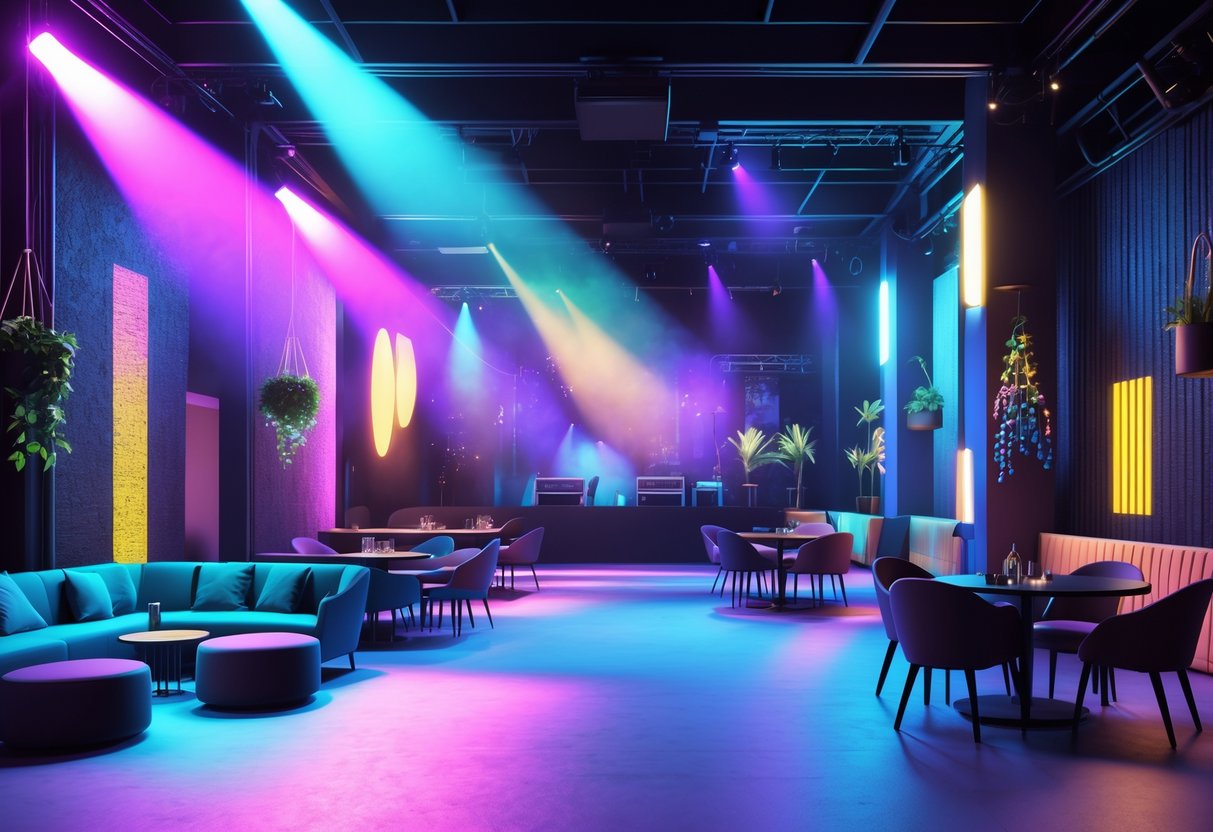
If you want the right venue atmosphere, you need three things working together: lighting, sound, and décor. Lighting sets the mood. Sound quality affects how people communicate and relax. Décor ties everything together and makes the theme feel real.
Lighting Design Essentials
Lighting is hands down your strongest tool for setting the vibe. It changes how people feel and behave in a space.
Ambient lighting is your foundation. Warm white (2700K-3000K) makes social events feel cosy. Cool white (4000K-5000K) keeps people sharp for conferences.
Accent lighting adds drama. Spotlights highlight stages or displays. Uplighting on walls creates depth and makes the room seem bigger.
Task lighting helps people see what matters. If folks need to read, aim for 500 lux or more. Dining areas feel best at 200-300 lux.
| Lighting Type | Best For | Colour Temperature |
|---|---|---|
| Warm ambient | Social events, dining | 2700K-3000K |
| Cool ambient | Conferences, workshops | 4000K-5000K |
| Accent spots | Stages, displays | Variable |
| Task lighting | Reading, detailed work | 4000K+ |
Quick win: Put dimmers on your lights. Start bright for check-in, dim for presentations, then brighten again for mingling.
Sound and Acoustics Impact
Bad sound ruins engagement fast. If people can’t hear, they tune out or just leave.
Volume matters. Background music should sit at 60-70 decibels—enough to notice, not enough to shout over. Presentations should hit 75-85 decibels for clarity.
Acoustic treatment is key. Hard surfaces bounce sound everywhere. Add soft stuff—curtains, rugs, panels—to soak up the noise.
Speaker placement changes everything. Keep them at ear level and point them at your audience. Don’t shove speakers into corners; that just muddies the sound.
Warning: Test every mic and speaker at least half an hour before people show up. Have a backup mic ready and someone who actually knows the system nearby.
Room shape can surprise you. Long, skinny rooms echo. Square ones sometimes make weird “hot spots” where it’s way too loud.
Décor and Styling Choices
Décor speaks before anyone does. It shapes how people act and feel right away.
Colour psychology is real. Blues calm people and build trust—great for business. Reds bring energy but can stress people out. Greens keep things balanced and natural, which feels good for longer events.
Furniture layout changes social dynamics. Round tables get everyone talking. Rows focus attention up front. Standing areas keep people moving and chatting.
Themed elements should fit your event, not distract from it. A few well-chosen pieces work better than a pile of random stuff. Plants add life, clean the air, and help with noise.
Practical stuff matters too. Don’t block views or make tripping hazards with decorations. Keep walkways open and exits obvious.
On a budget? Change up lighting, hang some fabric, and move furniture around. You’ll get a big effect without spending much.
Less is usually more. Three coordinated décor touches beat a jumble of themes that just confuse your guests.
Venue Selection and Its Influence
When you pick an event venue, you set the tone for everything that follows. The location determines who actually shows up, and the layout decides if your event flows or flops.
Location and Accessibility Considerations
Location can make or break your event. If it’s hard to get to, people just won’t come.
Transport links are huge. Venues near trains, buses, or main roads make life easier for everyone.
Parking’s a dealbreaker. City venues almost never have enough spaces. Check if there’s parking on-site or at least close by.
Think about your crowd. Business events need city centres with good transport. Family events do better in the suburbs where parking’s easier.
Distance matters. If it takes more than 90 minutes to get there, expect fewer people.
Don’t forget accessibility. Wheelchair access, lifts, and accessible toilets aren’t optional—they show you care about everyone.
Venue Capacity and Layout
Get capacity wrong and you kill the vibe. Too small? People feel packed in. Too big? It feels empty and awkward.
Stick to the 80% rule. Book a venue that’s about 25% bigger than your guest list. This covers last-minute invites but still feels lively.
Layout changes everything. Rows of chairs work for talks, round tables for discussion, and standing spaces for networking.
Break it up. Big events need clear zones—registration, main space, breakout rooms. Map out how people move between them.
Don’t forget the essentials. Make room for catering, gear, and clear exits. These all eat into your usable space.
Test the sound. Visit during a similar event and listen. Bad acoustics will wreck your plans.
Matching Venue to Event Type
Your venue should fit your event’s purpose and vibe. The wrong place just confuses people.
Formal events feel right in upscale venues. Awards nights or galas need hotels, historic spaces, or conference centres.
Casual events want creative spaces. Team-building days work in community halls, sports clubs, or even outside.
Product launches need flexibility. Good lighting, lots of power, and space for displays matter most. Modern, blank-canvas venues are usually best.
Check your brand image. Your venue says a lot. A tech startup might love an industrial loft, but a law firm probably wants something more classic.
Budget always matters. Fancy venues cost more but often include catering and AV. Cheaper spots save money but need more DIY.
Lighting: The Mood Setter
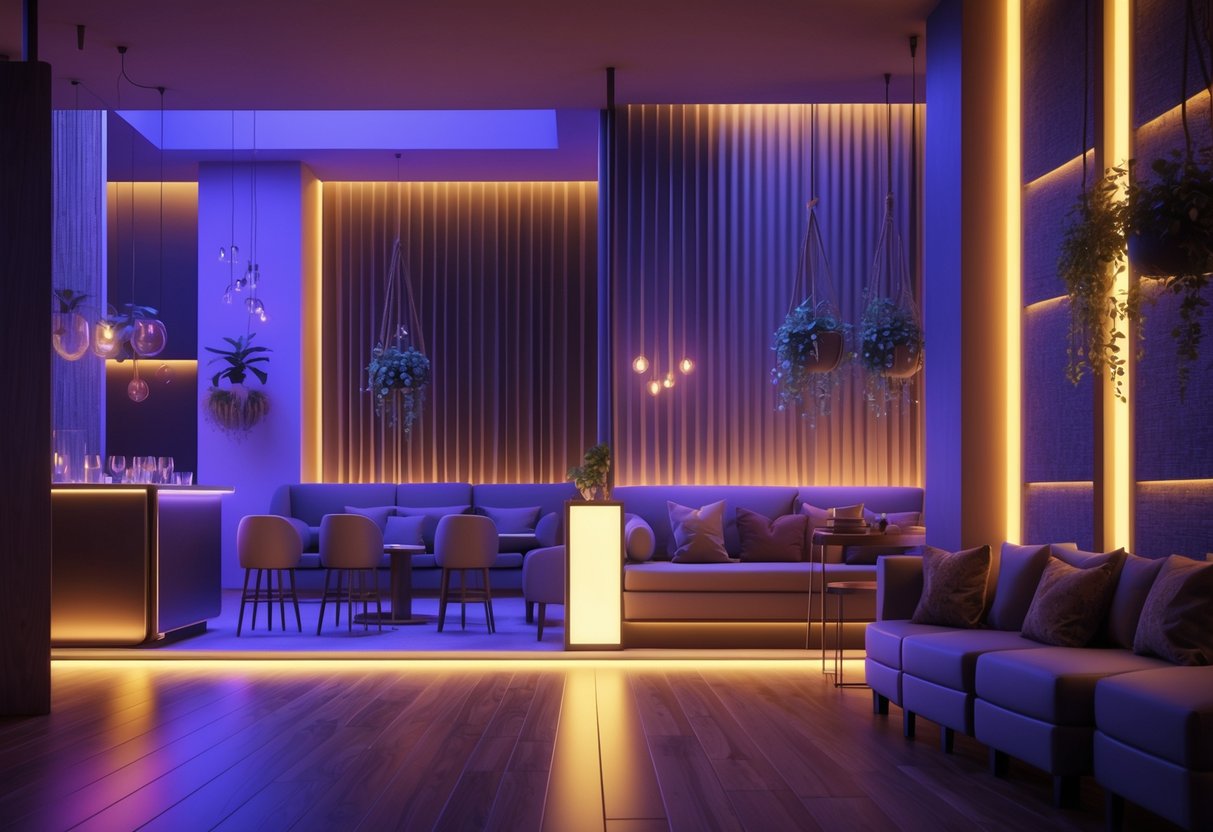
Lighting probably does more to shape the mood than anything else. The right colour, brightness, and placement can flip a space from buzzing to intimate in seconds.
Innovative Lighting Techniques
Uplighting instantly adds atmosphere by bathing walls in colour from the floor up. Try putting LED uplights every 8-10 feet around the edges. Gaming events love this for showing off team colours.
Colour washing lets you change the whole mood with a button. LED systems can switch from cool blues for competition to warm oranges for celebration. DMX controllers make it easy to automate.
Spotlighting pulls attention where you want it. Aim lights at the stage, commentary desk, or trophies. Use barn doors or gobos to keep the light focused.
String lights and fairy lights bring warmth to casual spaces. Hang them behind streaming setups or in chill-out areas for players.
Adjusting Lighting for Different Occasions
Tournaments need bright, even light for cameras and players. 3200K is a good target, with minimal shadows on play zones. Dim the audience a bit to keep focus up front.
Casual gaming nights feel better with warmer 2700K lighting. Add uplighting in your brand colours and put accent lights near food or social spots.
Streaming setups need consistent light—no flicker, no shadows. Ring lights or softboxes work for faces, and RGB strips add personality behind the streamer.
Award ceremonies are all about drama. Dim the house, spotlight the winners, and you’ve got a moment that looks great in photos.
Decor and Styling for Different Events
The right décor can totally transform a venue and pull people into your event’s world. Whether you’re planning a corporate night or a party, smart styling makes the atmosphere stick with guests long after they leave.
Themed Experiences and Immersive Design
A strong theme means paying attention to every visual in the room. Start by thinking about your audience and what you want them to feel.
Formal Events
Corporate galas or awards? Go for refined colours and structured layouts. Metallics like gold or silver with neutrals work well. Keep lines clean and cut the clutter for that pro look.
Casual Celebrations
Birthday parties or informal get-togethers let you be playful. Use bold colours and fun textures. String lights, bright linens, and creative centrepieces bring energy.
Seasonal Themes
Nature works wonders. Spring events pop with greenery and pastels. Winter gatherings feel cosy with rich fabrics, warm lights, and deep hues.
Key Design Elements:
- Lighting: Soft for intimate events, bright uplighting for high-energy
- Colour coordination: Pick two or three main colours and stick to them
- Texture variety: Mix wood, metal, and fabric for interest
- Focal points: Highlight entrances or the stage to draw attention
Floral Arrangements and Table Settings
Table settings are the first thing your guests notice. They should look beautiful, but still let people eat and talk comfortably.
Centrepiece Guidelines
Keep floral arrangements low so guests can see each other. If you stick to heights under 30cm, dining tables stay practical. Try mixing up arrangement sizes across the room—visual variety keeps things interesting.
Seasonal Flower Choices:
- Spring: Tulips, daffodils, cherry blossoms
- Summer: Roses, peonies, sunflowers
- Autumn: Chrysanthemums, dahlias, dried grasses
- Winter: Evergreens, white roses, holly
Table Setting Essentials
Layer your table from the bottom up. Start with linens, then charger plates, then stack on glassware and cutlery. Leave about 60cm between each place setting so people aren’t bumping elbows.
Budget-Friendly Options:
Single-stem flowers in small vases save money compared to big bouquets. Greenery like eucalyptus or ivy can look elegant and doesn’t cost much. Candles at different heights add a warm vibe without breaking the bank.
Mix up textures—try different napkins, table runners, or serving dishes. If you stick to a consistent colour scheme, everything ties together even when you use different pieces.
Music and Entertainment’s Role in Atmosphere
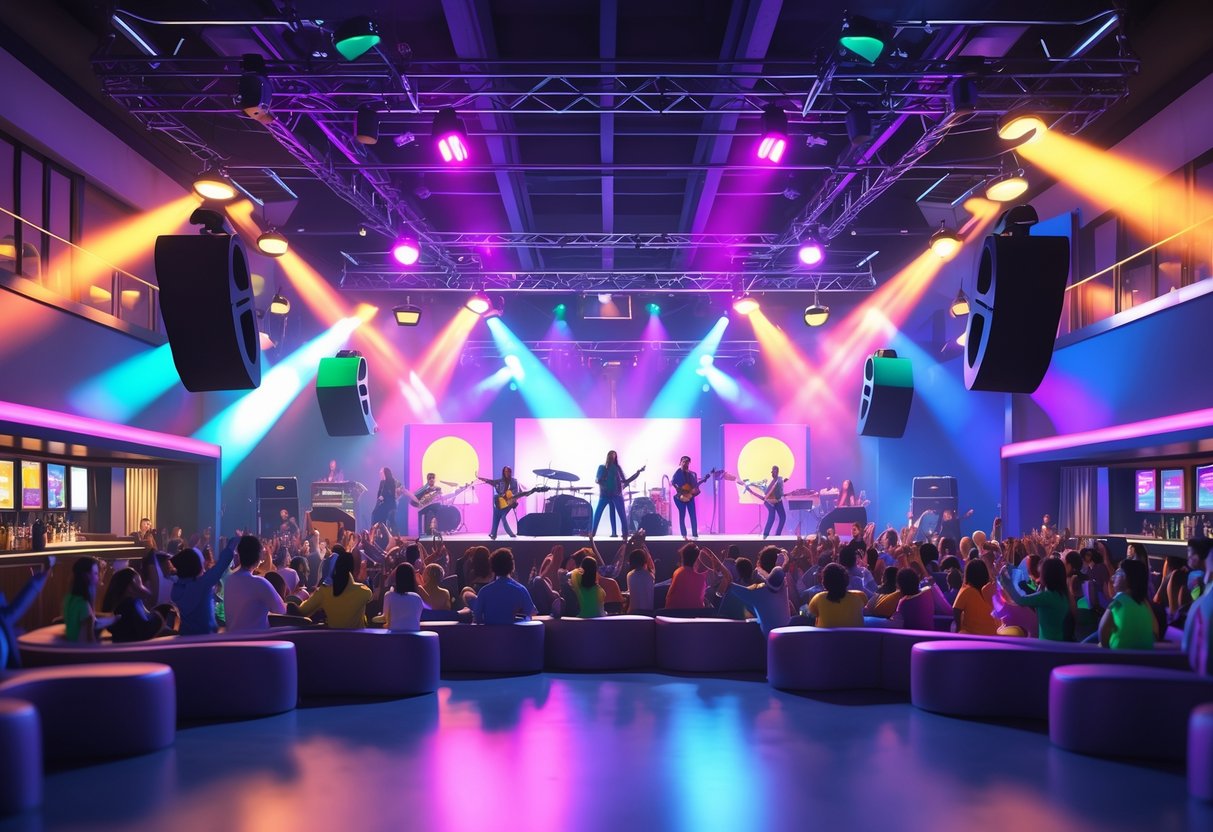
Music and entertainment totally change the feel of a venue. The choices you make here shape how guests act and enjoy themselves all night.
Choosing Appropriate Entertainment
Live music brings a buzz that playlists just can’t match. Walk into a venue with live performers and you’ll feel the difference right away.
Pick entertainment that fits your space. Jazz trios are great for intimate dinners, while rock bands fit pubs or late-night spots.
Think about who’s coming. Younger crowds usually want current hits and high-energy acts. Older guests might prefer acoustic sets or classic covers.
Budget considerations:
- Live bands: £200-£1,500 per night
- Solo acoustic acts: £100-£500 per night
- DJ services: £150-£800 per night
- Background playlists: £10-£30 monthly subscription
Try out different acts during slow nights and watch how guests react. Some venues see a 20-30% revenue boost with live music on certain nights.
Book entertainers who know how to read a room. The best ones adjust their set and volume based on how the crowd feels.
Audio-Visual Enhancements
Sound quality shapes every guest’s experience. Bad acoustics can ruin even the best performance.
Place speakers around the room so everyone hears clearly. Use several smaller speakers instead of just a couple of big ones.
Essential audio equipment:
- Mixing desk: £300-£2,000
- Professional speakers: £150-£800 per pair
- Wireless microphones: £100-£400 each
- Audio cables and stands: £50-£200 total
Lighting matters too. Warm lights work for acoustic sets, while colourful lights suit lively acts.
Add sound-absorbing panels to walls or ceilings if you can. They cost £20-£100 each and make a huge difference.
Run sound checks before every event. Train staff to tweak the volume as the crowd gets louder or quieter.
Guest Flow and Spatial Planning
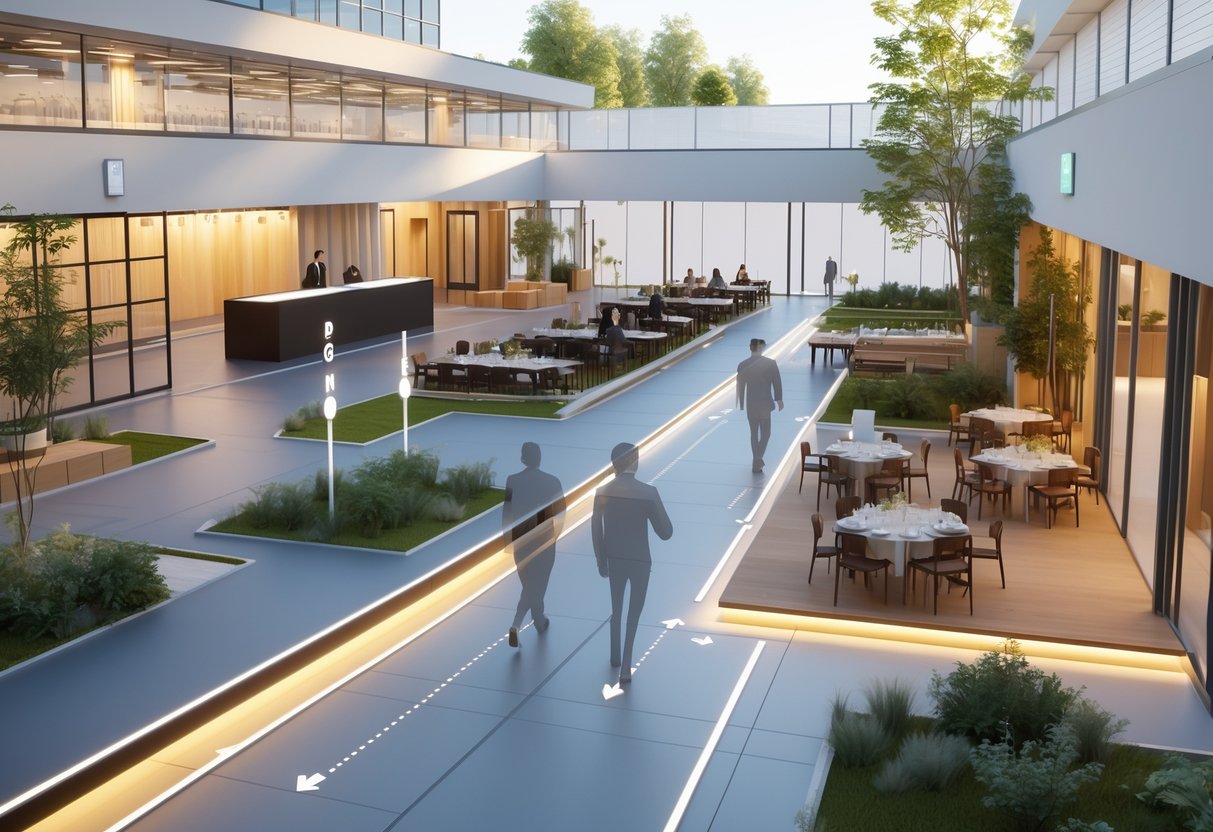
Smooth guest flow makes an event feel relaxed and welcoming. A smart layout lets people move easily and gives them comfortable spots to hang out.
Creating Comfortable Movement
Think about how guests will enter and move around your esports venue. The entrance sets the vibe, so keep sightlines open and leave space for people to gather without blocking others.
Entry and exit points should be clear and easy to find. Multiple routes in and out help avoid bottlenecks during busy times like tournament breaks.
Key movement tips:
- Clear paths between seats
- Easy access to restrooms and food
- Wheelchair-friendly routes
- Visible emergency exits
We keep high-demand spots like merch stands away from main walkways. This stops big crowds from blocking traffic.
Gaming areas need special attention. Players should reach their stations without walking through spectator zones. This keeps distractions down and the focus on the game.
Optimising Social Areas
The best community moments happen in social spaces. We design these areas to spark conversation and give people room to relax.
Networking zones work well with a mix of standing and sitting spots. High tables are great for quick chats, while lounge areas give people a place to settle in.
Food and drink stations draw people in naturally. Place them around the venue to spread out the crowd.
Key features for social areas:
- Varied seating—sofas, bar stools, standing space
- Tech—charging stations and screens with live feeds
- Noise control—quiet spots away from the main stage
- Clear views—people want to see the action while they chat
Social spaces should feel part of the main event, not separate from it. Guests need to hear the commentary and see key moments, but still talk comfortably.
Customisation and Personal Touches
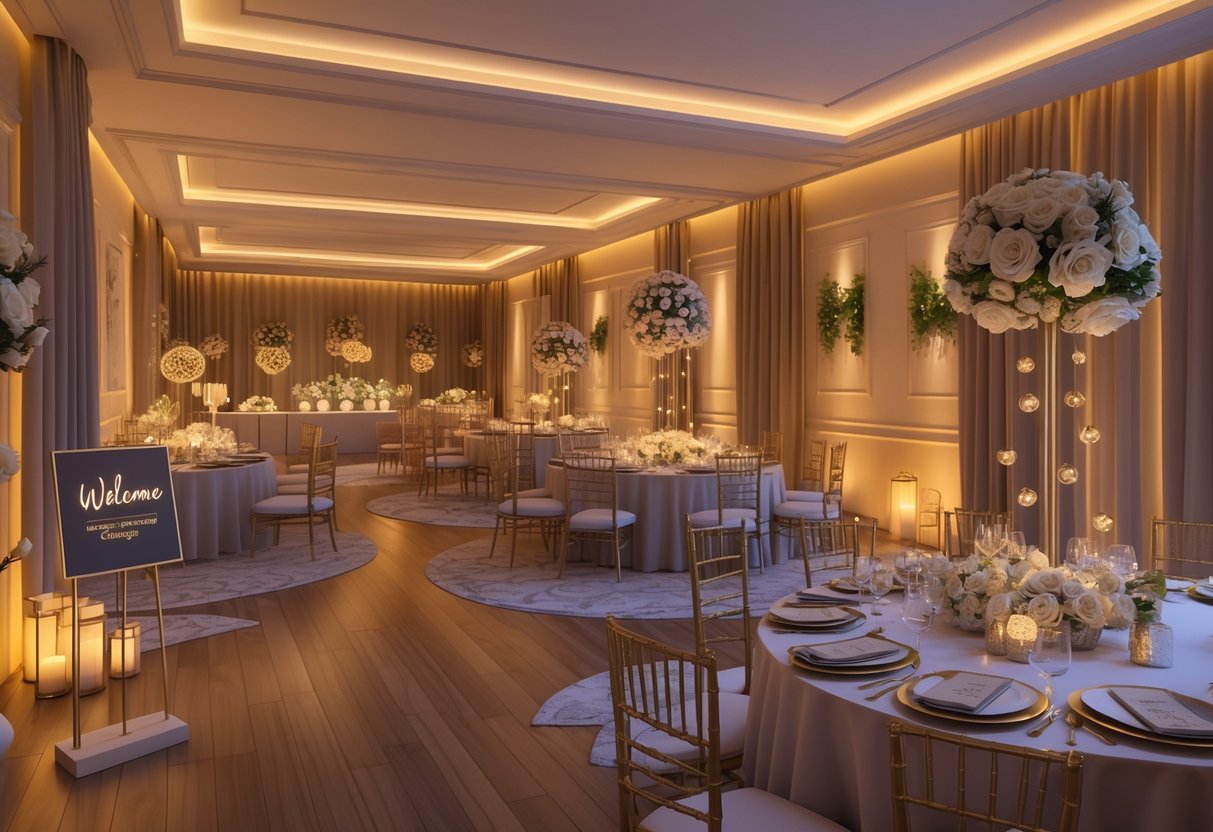
Adding your own style turns any event into something special. Personal details and interactive touches make memories that stick long after the party’s over.
Interactive Stations and Activities
Interactive stations pull guests in and get them involved. They break the ice and create fun photo ops.
Food and drink stations are perfect for this. Try a build-your-own pizza bar or a make-your-own cocktail station. These setups match your theme and give guests something fun to do.
Creative activity zones add personality. You could set up:
- Art walls for doodles or messages
- Photo booths with themed props
- Game corners with activities that fit your event
Tech touches like VR stations or live polling screens make things feel modern and interactive.
Pick activities that fit your event and your crowd. You don’t want anything to feel forced.
Personalised Invitations and Takeaways
Custom invites set the mood before guests even arrive. Add your event hashtag and nudge people to share on social media. The design should hint at what’s coming.
Scatter personalised details throughout the venue. Place cards, menus, or napkins with your logo or initials add a polished touch.
Meaningful takeaways help guests remember the day. Try:
- Photo albums made during the event
- Custom favours that fit your theme
- Memory books for guest messages
Digital keepsakes are a modern twist. QR codes that link to photo galleries or videos cost less than physical gifts and give guests more to relive later.
The best personal touches feel true to your story or brand. Skip generic decorations—they just don’t have the same impact.
Event Staff and Hospitality
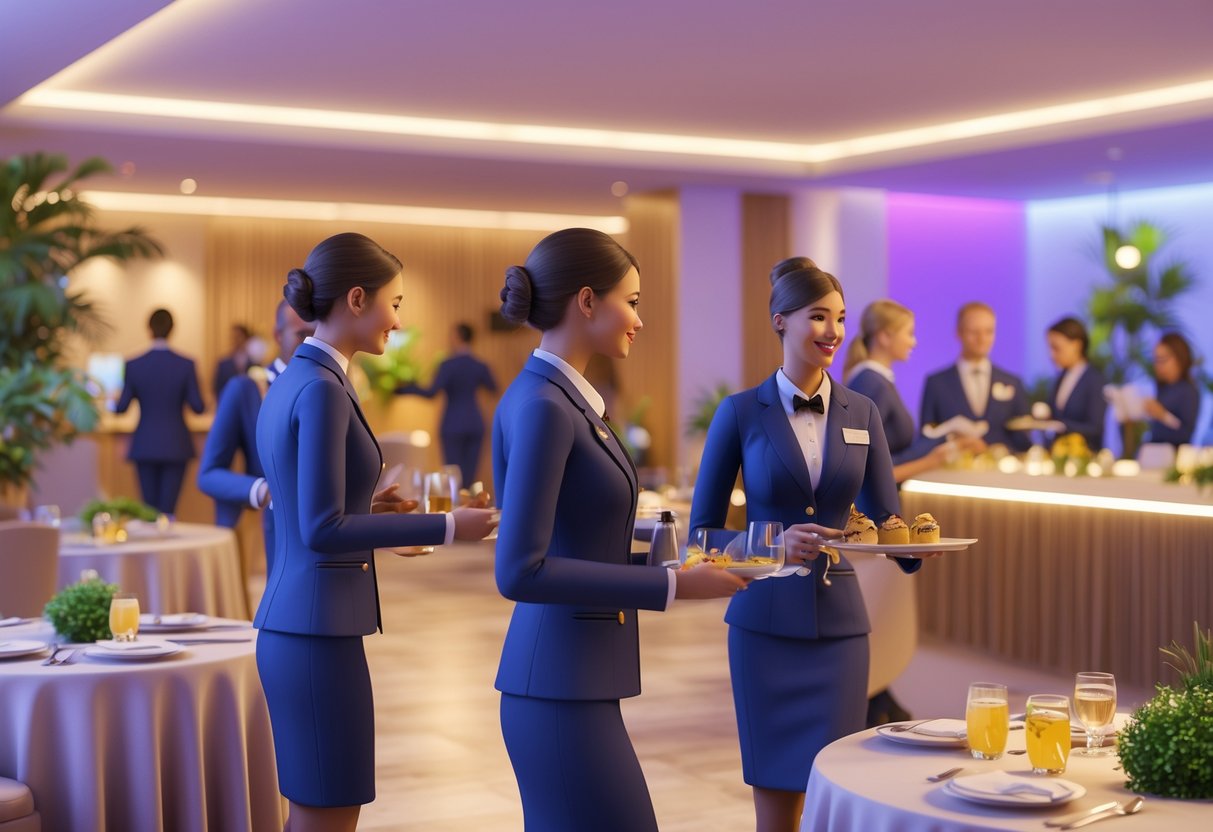
Your staff shape the entire guest experience. The right team can make people feel welcome and eager to come back.
Staff Attitude and Professionalism
Staff set the mood from the moment guests walk in. When team members greet people with real smiles and energy, the whole room feels warmer.
We’ve all seen events where staff look bored or frazzled. That kind of energy spreads fast, and guests notice right away.
Training your team makes a difference:
• Teach staff to make eye contact and use names
• Practice active listening
• Role-play common situations like handling complaints
• Remind everyone that body language and tone matter
Professional appearance counts. Clean uniforms, name badges, and good grooming show guests you care. Staff should know the basics about your venue, menu, and schedule.
When problems pop up, trained staff stay calm. They apologise and offer solutions, not excuses. That turns a bad moment into a good memory.
Service Speed and Guest Experience
Fast, efficient service keeps your event running smoothly. Long waits at registration, bars, or buffets frustrate guests and drag down the mood.
Time your service points during peak hours. If guests wait more than five minutes, it’s time to add staff or tweak your system.
Key guest experience spots:
| Service Point | Target Wait Time | Staff Ratio |
|---|---|---|
| Registration | Under 2 minutes | 1 staff per 25 guests |
| Bar service | Under 3 minutes | 1 bartender per 50 guests |
| Food service | Under 5 minutes | 1 server per 15 guests |
Train staff to work quickly but never rush guests. They should spot needs—like empty glasses or dirty plates—before being asked.
Staff communication matters. Radios or group chats let teams coordinate on the fly. When one area gets slammed, others can jump in to help.
Let staff solve small problems without waiting for a manager. A free drink for a delay or a quick table swap keeps things on track and guests happy.
Venue Terms and Conditions to Consider
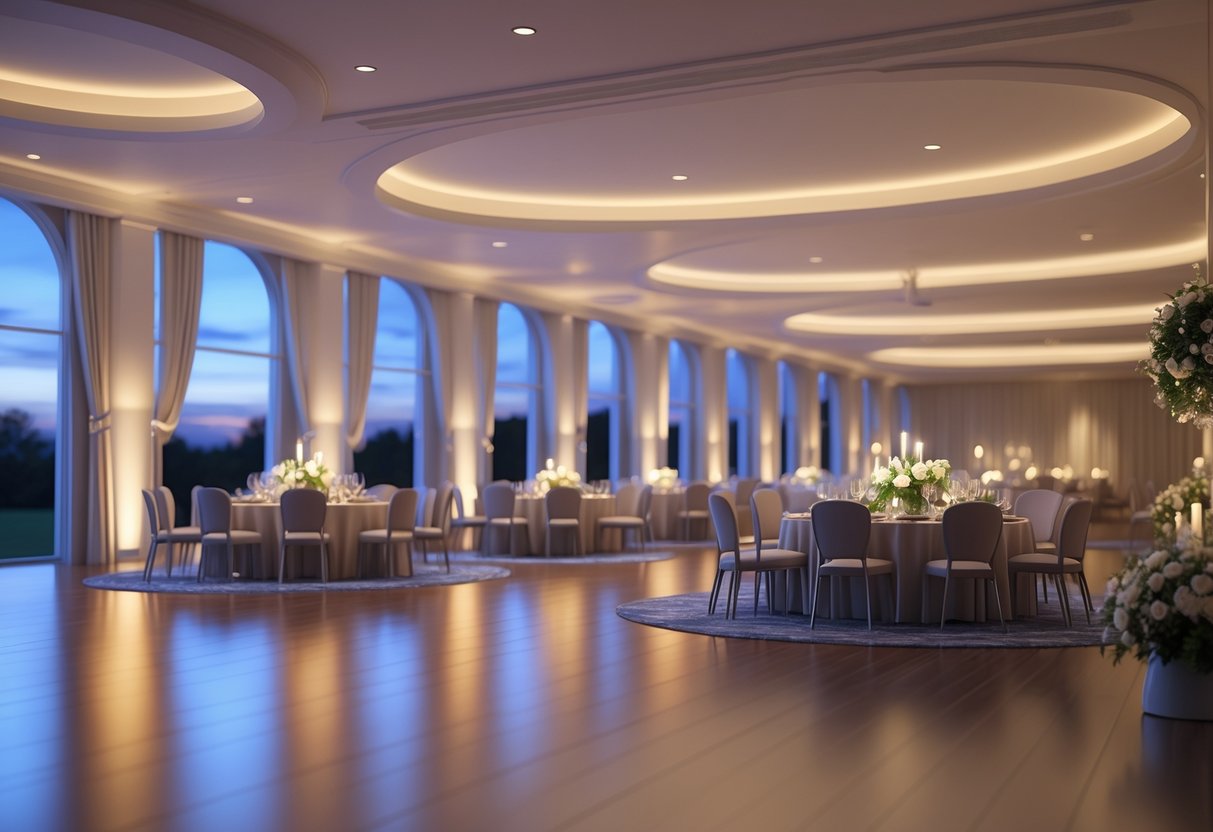
A smart venue contract can save your esports event from nasty surprises. Knowing the fine print and negotiating the right terms protects your budget and your sanity.
Understanding Venue Policies
Venue contracts usually have standard terms that can make or break your event. Check cancellation policies first—many venues want 30-90 days’ notice or you’ll lose your deposit.
Equipment and setup rules matter for gaming events. Some places limit power use or ban certain rigs. Hotels might restrict internet changes, which can ruin a tournament if you need reliable connections.
Food and drink clauses often force you to use in-house catering. That can triple your costs. Look for venues that allow outside food or offer gamer-friendly options like energy drinks and snacks.
Noise rules are a big deal for esports. Crowds get loud, and some venues have strict decibel or time limits. Make sure you can cheer without getting shut down.
Insurance requirements vary a lot. Some venues want £2-5 million in public liability, while others include basic cover. Add these costs to your budget early.
Negotiating Flexible Arrangements
Good negotiations start with understanding what venues want—less risk and more revenue. If you address those, you’ll often get better terms.
Payment schedules are flexible. Instead of 50% upfront, ask for smaller deposits tied to attendance numbers. Many venues accept 25% from established organisers.
Setup and breakdown time can be cheaper than you think. Esports needs a lot of tech setup, so negotiate for early access at a lower hourly rate.
Damage waivers protect both sides. Standard contracts charge for any damage, but you can ask for “fair wear-and-tear” clauses to cover normal scuffs from cables and gear.
Force majeure clauses are a must these days. Make sure your contract covers player travel bans, government rules, or venue closures.
Revenue sharing sometimes beats flat fees. Bigger venues might take a cut of ticket or sponsorship revenue instead of charging a high base cost.
Assessing and Improving Venue Atmosphere
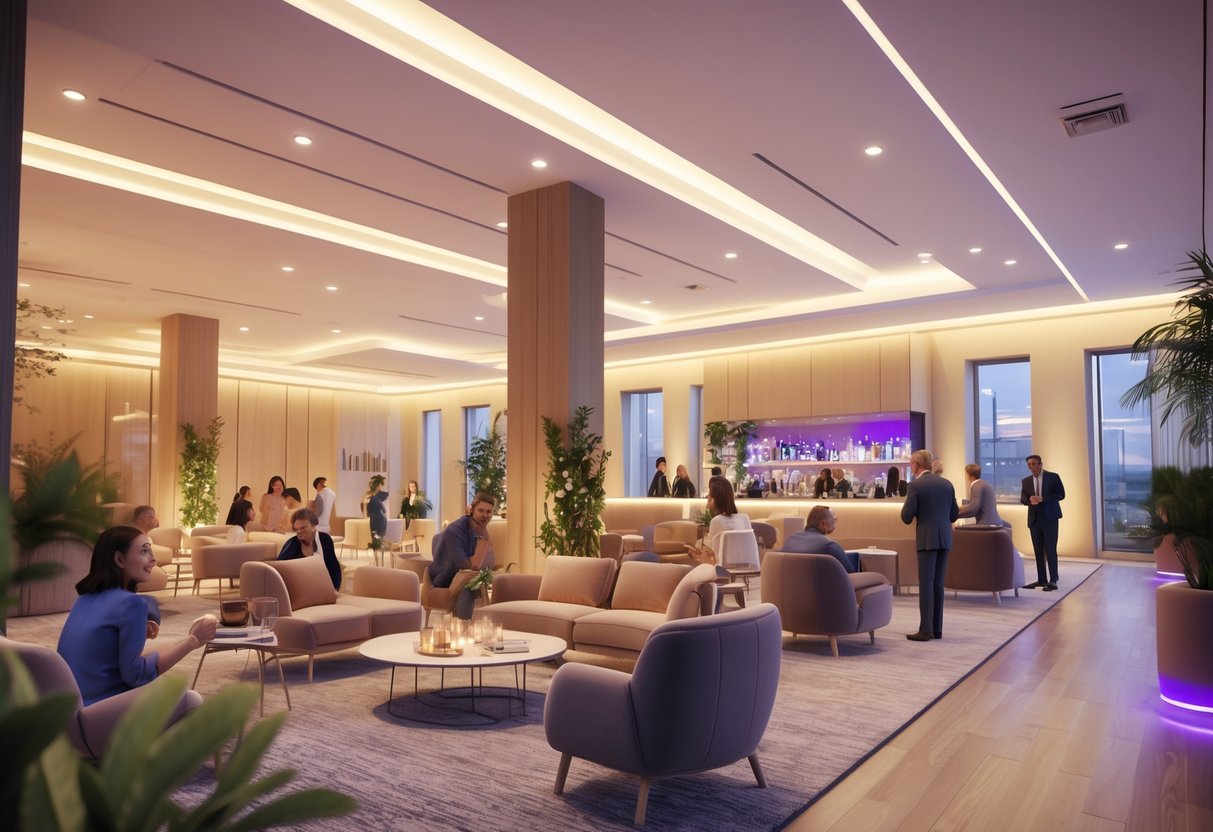
Creating the right atmosphere isn’t a one-and-done thing. You’ll need to keep checking in, listen to guest feedback, and tweak things as you go if you want your venue to stay competitive.
Collecting Feedback from Guests
Getting honest feedback lets us see how guests actually feel about our venue.
We use a few different methods to gather this info.
Digital feedback methods tend to work for most people. We send out short surveys within 24 hours of events.
Ask direct questions about lighting, sound quality, and how comfortable the space feels.
Use rating scales for important details:
- Temperature control (1-5 stars)
- Noise levels during quiet periods
- How easy it is to find your way around
- Overall comfort
Face-to-face conversations during events give us fast, real answers.
We train staff to ask things like, “How’s the lighting for you?” or “Is the temperature alright?”
Social media shows us what guests really think, unfiltered.
We check Instagram stories, Twitter mentions, and Google reviews often. Guests sometimes post things online they wouldn’t say in person.
Anonymous suggestion boxes near exits encourage honest feedback.
Some guests just find it easier to write down concerns instead of saying them out loud.
Continuous Enhancement Strategies
Regular improvements keep our venue atmosphere fresh and appealing.
Even small changes can make a big difference.
Monthly atmosphere audits help us catch issues early.
We walk through the venue at different times of day and check lighting, air quality, and outside noise.
Here’s a basic checklist:
- Are all the lights working?
- Does the air feel fresh everywhere?
- Can you hear outside noise that’s distracting?
- Do seating areas look inviting?
Seasonal adjustments help us meet guest expectations.
Warmer lighting feels better in winter, while brighter settings work for summer events.
Technology upgrades slowly improve the guest experience.
We replace old sound systems bit by bit. We add charging stations where guests tend to gather.
Staff training updates make sure our team manages the atmosphere well.
We teach them how to adjust lighting and temperature depending on the crowd and the weather.
We keep track of which changes guests mention most in feedback.
That helps us decide what to invest in next.
Frequently Asked Questions
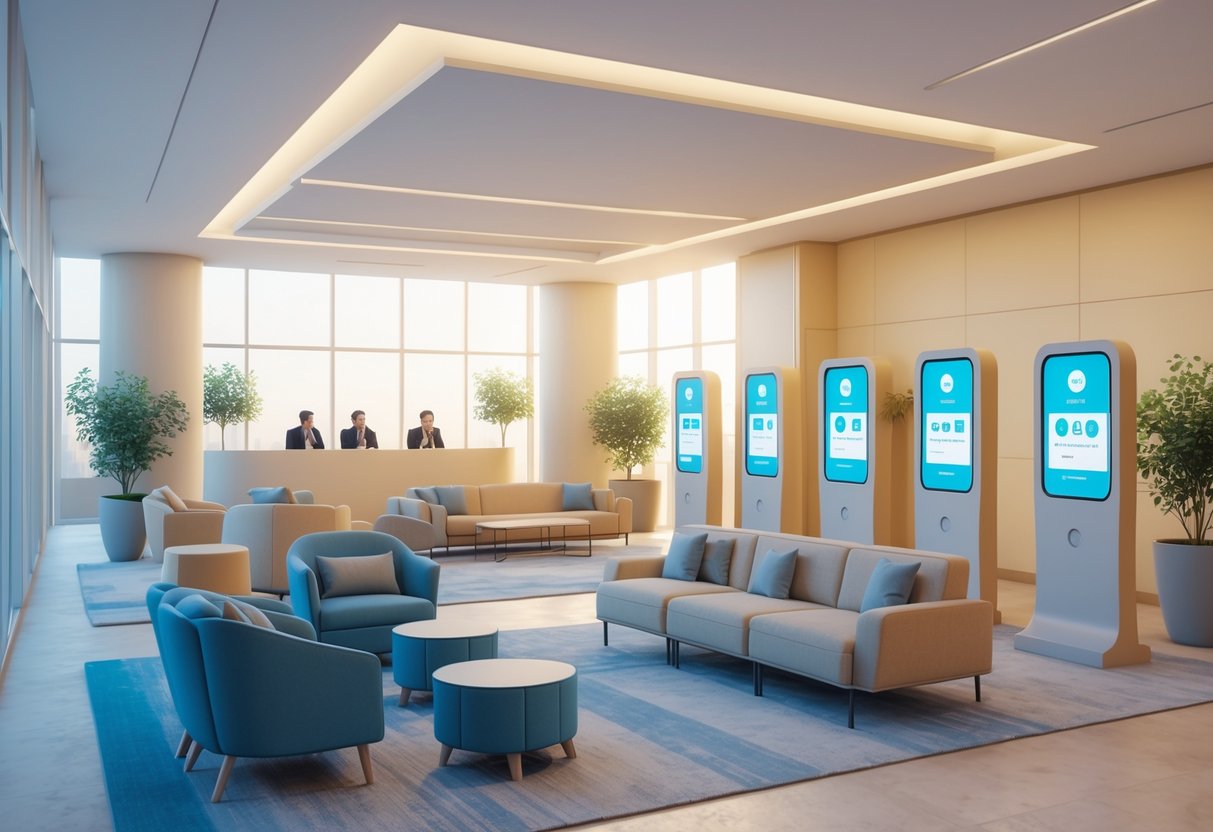
Creating the right atmosphere means managing lighting, sound, décor, and the flow of space to match your event goals.
Here are some questions that cover the main elements that can turn any venue into a memorable experience.
What factors contribute to a great atmosphere at an event?
Several key elements shape a memorable event atmosphere.
The venue’s size and layout should fit your guest count and let people move easily.
Lighting sets the mood.
Soft, warm light creates intimacy, while bright, cool lighting energises people. We usually mix ambient and accent lighting to highlight important spots.
Sound quality matters a lot.
Background music should support conversations, not drown them out. Live performances can add excitement, but think about how your venue handles sound first.
Temperature control keeps everyone comfortable.
No one enjoys a room that’s too stuffy or freezing. Always check heating and cooling before guests arrive.
Staff attitude makes a big difference.
Friendly, helpful team members help guests feel welcome right away.
How does the design and décor of a venue influence the mood of guests?
Décor shapes the first impression guests get.
Colours, textures, and visual elements tell your story before anyone even speaks.
Warm colours like red and orange feel lively and energetic. Cool colours like blue and green help people relax.
Pick colours that match your event’s vibe.
Visual flow can guide guests through the space naturally.
Smart placement of decorations defines different areas or creates cozy corners in big venues.
Interactive décor gives guests something to do—think photo booths, memory walls, or hands-on displays.
Clutter stresses people out, but clean, organised spaces feel welcoming.
We usually focus on a few standout pieces instead of filling every spot.
Are there any tips for enhancing the ambience of a function room?
Layered lighting can totally change a basic function room.
Mix overhead lights with table lamps, candles, or string lights to add depth.
Fabric softens harsh surfaces.
Try draped tables, chair covers, or hanging textiles for extra texture.
Fresh flowers or plants instantly make sterile spaces feel alive.
Even a simple arrangement on each table helps.
You can create smaller zones in large rooms with furniture or decorative screens.
That makes the space feel more personal and intentional.
Hide or cover anything that looks out of place.
A tablecloth can quickly disguise equipment or furniture that clashes with your theme.
Scent has a subtle effect on mood.
Light candles or use gentle diffusers, but avoid strong smells that might bother guests with allergies.
What role does lighting play in setting the perfect scene for an occasion?
Lighting controls how guests feel when they walk in.
Each type of lighting serves a purpose.
Ambient lighting gives general illumination and sets the base mood.
This includes ceiling lights, wall sconces, or whatever guests first notice.
Accent lighting draws attention to important spots.
Spotlights on centrepieces, uplighting on walls, or pin lights on art create visual interest.
Task lighting helps with practical things like reading menus or signing papers.
Make sure areas like registration, bars, and tables have enough light.
Coloured lighting can support your theme or set a mood.
Blue light feels professional and calming, while warm amber makes things feel cozy.
Dimmable lights let you switch things up as the event goes on.
Brighter lights work for networking, while dimmed lights suit speeches or dancing.
How important is music selection in creating a memorable experience at a venue?
Music shapes guest energy and behaviour all night.
A great playlist keeps people engaged, but the wrong songs can clear the room fast.
Volume matters even more than song choice.
Guests should hear the music but still talk comfortably.
Match your music to the event’s pace.
Upbeat tracks suit arrivals and mingling; softer music works for dining or speeches.
Know your crowd.
Younger guests might want current hits, while corporate groups often prefer instrumental or jazz.
Live music offers something special that recordings just can’t match.
Consider your budget and space before booking bands or solo acts.
Always plan for technical hiccups.
Have backup playlists and test your sound system before guests show up. Awkward silence? Nobody wants that.
Can you suggest ways to make a space feel more intimate and welcoming for attendees?
How you arrange furniture really shapes the mood of a space. Try grouping chairs and sofas so they face each other, not just lining them up in stiff rows.
Lowering the lights changes everything. Swap out harsh overhead fluorescents for some table lamps, candles, or even string lights if you can.
If you’re dealing with a big venue, break it up into smaller zones. You can use decorative screens, plants, or furniture to carve out cozier areas.
Adding personal touches goes a long way. Things like name cards, welcome notes, or little custom details let guests know you thought about them.
People will stick around and actually talk if they’re comfortable. Mix up your seating—maybe some sofas, a few armchairs, and bar stools for variety.
It helps to control how guests come in. One main entrance with a friendly greeter feels warmer than a bunch of random open doors.
Keep decorations at a human scale. Choose centerpieces that don’t block conversation, and hang wall art where folks can actually see it.

